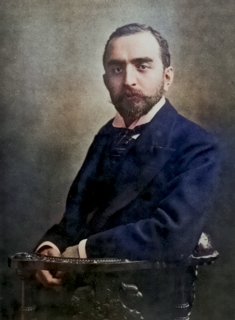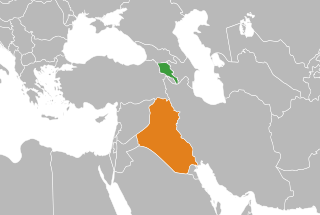
Calouste Sarkis Gulbenkian, nicknamed "Mr Five Per Cent", was a British-Armenian businessman and philanthropist. He played a major role in making the petroleum reserves of the Middle East available to Western development and is credited with being the first person to exploit Iraqi oil. Gulbenkian travelled extensively and lived in a number of cities including Istanbul, London, Paris and Lisbon.

The Balyan family was a prominent Armenian family in the Ottoman Empire consisting of court architects in the service of Ottoman sultans and other members of the Ottoman dynasty during the 18th and 19th centuries. For five generations, they designed and constructed numerous major buildings in the Ottoman Empire, including palaces, mansions, konaks, kiosks, yalis, mosques, churches, and various public buildings, mostly in Constantinople.

Şebinkarahisar is a town in and the administrative seat for Şebinkarahisar District, Giresun Province in the Black Sea region of northeastern Turkey.

Hagop Kazazian Pasha (1836–1891) was a high-ranking Ottoman Armenian official, who served as the Minister of Finance and the Minister of the Privy Treasury during the reign of Sultan Abdul Hamid II. Famed at the time for his loyalty, he received a state funeral after he died in 1891 from a horse-riding accident on the grounds of Kalender Kasrı while riding a horse that had been a gift from the sultan.

Iraqi Armenians are Iraqi citizens and residents of Armenian ethnicity. Many Armenians settled in Iraq after fleeing the 1915 Armenian genocide. It is estimated that there are 10,000–20,000 Armenians living in Iraq, with communities in Baghdad, Mosul, Basra, Kirkuk, Baqubah, Dohuk, Zakho and Avzrog.
The Battle of Dilman was a battle during World War I fought at Dilman between the Russian Empire and the Ottoman Empire.
Sarkis Acopian was an inventor, industrialist, environmentalist, and humanitarian.

Saint Sarkis Cathedral is an Armenian cathedral in Yerevan, Armenia. It is the seat of the Araratian Pontifical Diocese of the Armenian Apostolic Church. It was built in 1842, on the left bank of the Hrazdan River in Yerevan's Kentron District.

The Vilayet of Sivas was a first-level administrative division (vilayet) of the Ottoman Empire, and was one of the Six Armenian vilayets. The vilayet was bordered by Erzurum Vilayet to the east, Mamuretülaziz Vilayet to the south-east, the Trebizond Vilayet to the north and Ankara Vilayet to the west.

Saint Sarkis Monastery is a large monastic complex, 45 by 54 metres just outside the village of Ushi in the Aragatsotn Province of Armenia. It sits at the far side of what was once a settlement site from the 3rd - 1st millennia BC. The monastery is a well known pilgrimage site, and was one of the centers of spiritual education in Armenia. Many fine examples of early Armenian architecture from various periods can be seen around the complex.

Saint Sargis the General or Sergius Stratelates is revered as a martyr and military saint in the Armenian Apostolic Church. The name Sargis (Sarkis) is the Armenian form of Sergius (Sergios).

Sarkis Torossian was a decorated Ottoman Armenian captain who fought in the Gallipoli Campaign and according to his memoirs, was the first person to sink a British battleship. After the Armenian genocide however, when most of his family was massacred, he switched sides and joined the fight against the Ottoman Empire. He later moved to the United States where he wrote and published his memoirs, From Dardanelles to Palestine: a true story of five battle fronts of Turkey. The authenticity and accuracy of his memoirs have been debated by historians. In anticipation of the publication of Torossian's memoirs in Turkey by Ayhan Aktar, Torosian's descendants were discovered by local historian Paul Vartan Sookiasian. From there, Taner Akçam interviewed Torossian's granddaughter who described her grandfather's life in detail.

St Sarkis is an Armenian Apostolic church and a Grade II* listed building in Iverna Gardens, Kensington, London. It was constructed in 1922–23 by Calouste Gulbenkian as a memorial to his parents, and the architect was Arthur Davis. It is the only church in England to have been built in the traditional Armenian style. Its design is inspired by the 13th century freestanding bell tower of Haghpat Monastery. It is the seat of the Diocese of the United Kingdom of the Armenian Apostolic Church.

Sarkis Minassian, also known as Aram Ashod, was an Armenian journalist, writer, political activist, and educator. He became the chief editor of the newspaper Hairenik in Watertown, Massachusetts. After returning to the Ottoman Empire in 1909, Minassian continued writing in various journals in the city. In 1915, Sarkis Minassian was killed during the Armenian genocide.

Liberation Mosque, formerly the St Mary's Church Cathedral or Holy Mother of God Church, is located in the Tepebaşı district of Gaziantep in Turkey. It was built as an Armenian church, but, after the Armenian genocide, it was converted into a storage building and later, it was converted into a jail. Sarkis Balyan, the Ottoman-Armenian architect of Sultan Abdulhamid II, designed the church. Construction started in 1892, undertaken by the stonemason Sarkis Taşçıyan. The church was part of a complex which also contained a school and the administrative buildings of the dioceses of the kaza of Antep.

Saint Sarkis Church is an Armenian Apostolic church in Baron Avak neighborhood of Tabriz, Iran. St. Sarkis was built with funding from the Petrossian family. Built in 1845, the church is in the courtyard of Tamarian Armenian school building, which was extended out to add the Sahakian School. The Haykazyan school was located across from these, but was closed after being damaged in the Iran-Iraq war.
Erganian is an Armenian surname
Saint Sarkis Church of New Julfa,, is an Armenian Apostolic church in New Julfa, Iran. It is located in Yerevan neighbourhood of New Julfa.
Sarkis Elyas Lole, also known as Levon, was a prominent Armenian architect of the Ottoman Empire. Lole was the chief architect of Mardin and responsible for much of the late nineteenth- to early twentieth-century architecture of the city, as well as in neighboring Diyarbakır.














